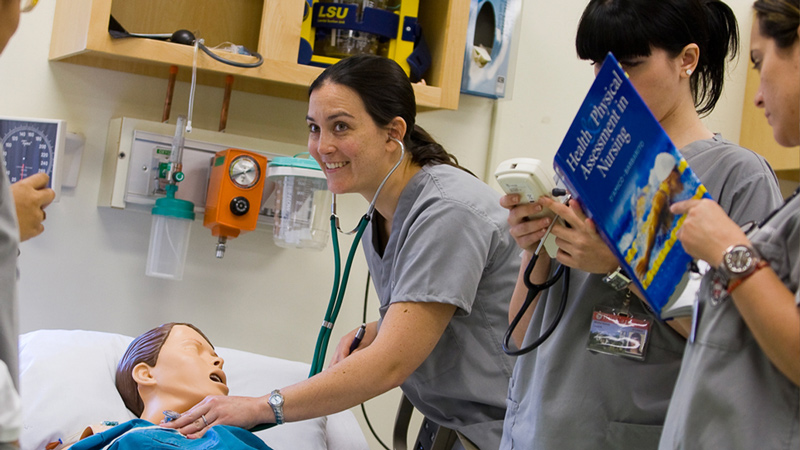Collaboration with off-campus emergency response agencies is a need that is particularly critical at the University. The University is committed to enhancing collaboration and communication with these agencies to avoid duplication of effort. This ensures that all emergency policies, plans, and procedures are consistent with local, state and federal plans are as prepared as possible for a major campus emergency of any type. External relationships are established to assist Barry University with the continuous improvement and sustainability of its comprehensive all-hazards emergency management efforts. These external relationships include: Village of Miami Shores Police Department, North Miami Police department and Public Works, Miami-Dade Police Department, Miami-Dade Fire Rescue, Miami-Dade Police Department, Florida Department of Law Enforcement, Florida Department of Emergency Management, Southeast Regional Domestic Security Task Forces, Miami-Dade County Health Department, U.S. Department of Homeland Security and Florida Power and Light. Appropriate University personnel meet with external partners as needed; external partners assist with all preparedness and mitigation/prevention initiatives listed within the University CEMP.
Preparedness & Prevention
Collaboration
Planning
The University CEMP is reviewed, updated, and enhanced on a continual basis in accordance with newly implemented laws or regulations, and the lessons learned after emergency preparedness exercises or real-life emergency incidents. The University Director of Public Safety and Emergency Management collaborates with designees from the: Executive Committee of the Administration, Finance, Facilities Management, Information Technology, Administrative Information Systems, Legal Affairs, Marketing and Communications, Student Affairs, Housing & Residence Life, Student Health Center, Counseling & Psychological Services, Disability Services and Food Service, to review and revise the CEMP as needed. The Director of Public Safety and Emergency Management consults with other members of the Barry University community as may be appropriate for additional input.
Emergency preparedness and the planning process are the responsibility of the entire University community. Students, faculty, staff and visitors can access the latest version of the CEMP's BASIC PLAN on the Public Safety Department pages of the University website at www.barry.edu/includes/docs/public-safety/bu-comprehemsive-emergency-plan.pdf. The Director of Public Safety and Emergency Management is responsible for distributing a copy of the entire CEMP to all supporting emergency response agencies on an as-needed basis, and or annually.
Essential Personnel
The University has determined the positions and functions within the University that are critical for responding to and recovering from an emergency. The University created three levels for University personnel, each with its own minimum mandatory level of training. The three levels of University personnel are:
- General Personnel - personnel with a supportive role in University emergency preparedness, incident management, or response.
- Essential Personnel - personnel with a critical role (i.e., needed to perform essential functions of the University) in the response to a University emergency
- Leadership Personnel - personnel with a leadership role in the response to a University emergency.
If a position or function was determined to be critical, the employee responsible for that position or function was designated as essential personnel. Essential personnel are required to remain available for assignment during a declared emergency as a condition of their employment. Employees are advised annually if they are essential in the case of a declared emergency. Essential personnel are required to carry their University issued identification card in order for scene security to be maintained.
The University reserves the right to designate additional functions as essential according to circumstances and the needs of the University. The designation of essential functions is authorized under this Comprehensive Emergency Management Plan.
| GENERAL PERSONNEL | ESSENTIAL PERSONNEL | LEADERSHIP PERSONNEL |
|---|---|---|
|
|
|
Training
National Incident Management System Incident Command System training is a critical component of The University’s preparedness actions. The Department of Public Safety and Emergency Management is responsible for identifying University personnel in need of training based on their roles and responsibilities in the overall preparedness for, management of, and response to a University emergency. The Department of Public Safety and Emergency Management will initiate the following procedures, upon deeming National Incident Management System / Incident Command System training as essential for a faculty or staff member:
- Contact the staff member directly if director level or higher
- Contact staff member’s immediate supervisor if below director level
- Contact faculty member directly if chair/director level or above
- Contact faculty member’s immediate supervisor if below chair/director level
| COURSE # | COURSE TITLE | GENERAL | CRITICAL | LEADERSHIP |
|---|---|---|---|---|
| 100.he | An Introduction to ICS | X | X | X |
| 200.b | ICS for Single Resources and Initial Action Incidents | X | X | X |
| 300 | Intermediate ICS for Expanding Incidents | X | X | |
| 400 | Advanced Incident Command | X | X | |
| 700.a | An Introduction to NIMS | X | X | X |
| 800.b | An Introduction to the National Response Framework (NFR) | X | X | X |
The Department of Public Safety and Emergency Management is required to maintain a database of all mandatory trainings (National Incident Management System, Incident Command System, other) taken by University personnel and ensure that the University training program is compliant with current state and federal regulations. The Department of Public Safety is responsible for collaborating with all local and state emergency response agencies to identify additional training opportunities that can benefit The University personnel.
Exercising
The Department of Public Safety and Emergency Management is responsible for the development, implementation and maintenance of a regular exercise schedule to test and evaluate the CEMP. The Director of Public Safety and Emergency Management will review the academic calendar to determine the best times to conduct the specified exercises and work with appropriate University designees to finalize the schedule with each functional area to ensure the least impact to normal University operations and the adequate involvement of faculty, staff and students. The Department of Public Safety will attempt to hold exercises in conjunction with the local, state and federal emergency response agencies that serve and protect the University to avoid duplication of efforts and enhance collaboration. All exercises are required to be conducted in accordance with the Homeland Security Exercise and Evaluation Program. Lessons learned from completed exercises will be documented and an improvement plan will be created to identify areas for improvement.




















